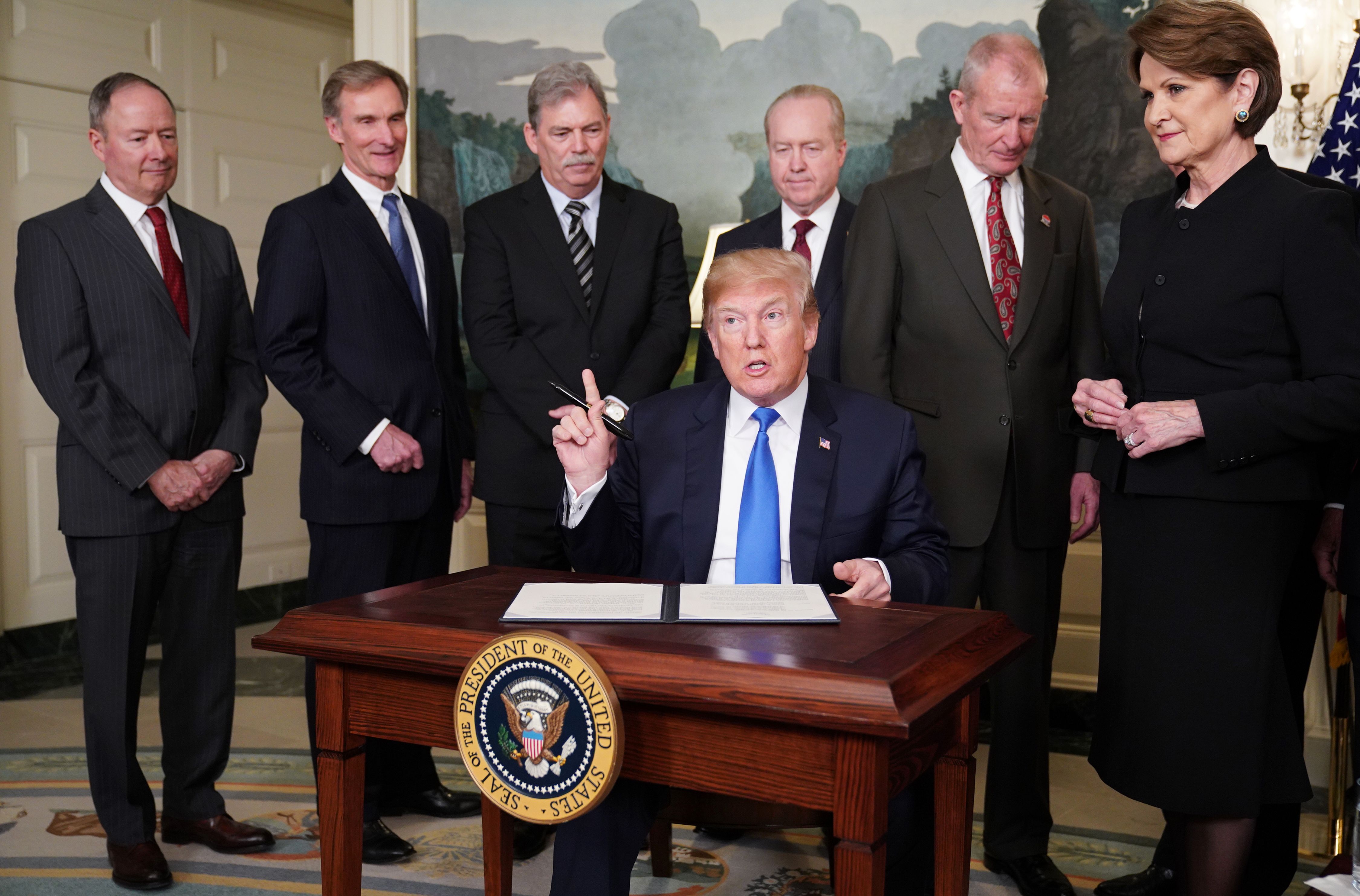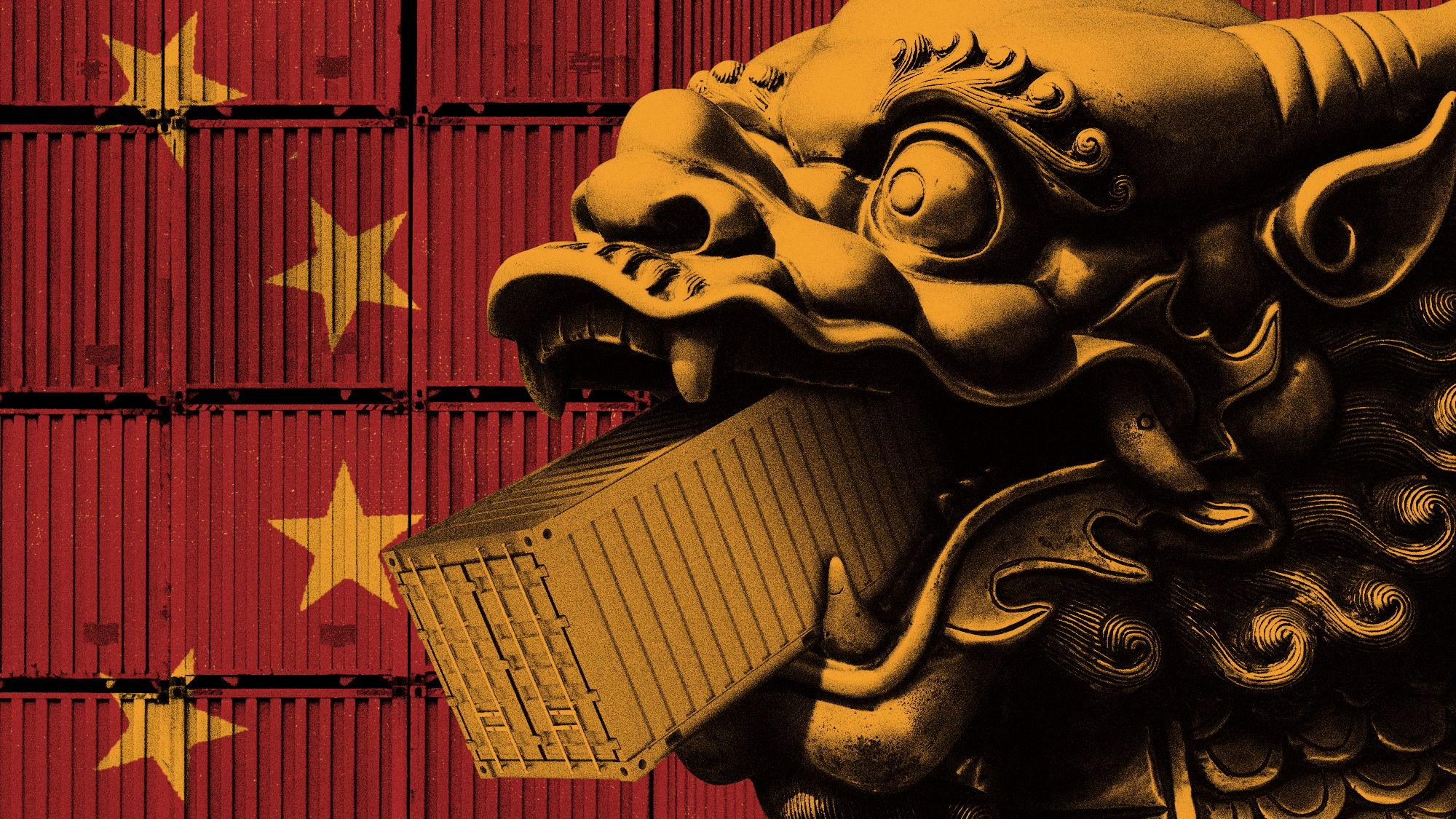So much for Trump's trade war?
It turns out it might be more of a skirmish. Here's why.


Maybe President Trump's trade war will be more of a trade skirmish. That seemed to be the stock market's conclusion yesterday.
It was a notable shift from last week when there seemed to be a full-blown panic over already announced tariffs on about $40 billion worth of steel and aluminum imports and looming tariffs on another $60 billion of Chinese imports. Politicians, economists, and journalists were making doom-laden predictions: One study estimated Trump's steel tariffs alone would kill 146,000 American jobs. Wall Street responded with the worst single-week fall for U.S. stocks in two years.
Then, on Monday, news broke that China and the U.S. are open to negotiations. Wall Street promptly had its biggest one-day surge since mid-2015.
The Week
Escape your echo chamber. Get the facts behind the news, plus analysis from multiple perspectives.

Sign up for The Week's Free Newsletters
From our morning news briefing to a weekly Good News Newsletter, get the best of The Week delivered directly to your inbox.
From our morning news briefing to a weekly Good News Newsletter, get the best of The Week delivered directly to your inbox.
This new, calmer take on Trump's trade policy makes a fair amount of sense. And not just because of Monday's news.
Let's begin with the economic effects. This involves answering a lot of questions: Will companies eat both sets of tariffs as production costs, or pass them on to customers? Will customers reduce their spending, buy American alternatives, or buy other imports? If jobs lost directly to the tariffs spark further job losses, how strong will that effect be? No one knows the answers to any of these questions. But economic models require values for these variables, so economists just have to take their best guesses.
For instance, back in early 2016, it sounded like Trump might slap a 45-percent tariff on China, and a 35-percent one on Mexico. Moody Analytics projected that would reduce U.S. GDP by as a much as 5 percentage points and kill millions of jobs. But as economist J.W. Mason pointed out at the time, this requires assigning some really extreme values to those variables. "That doesn’t mean you can’t use them, but you need to justify them," Mason wrote. His own estimate was a loss of 0.9 percentage points of GDP.
One huge factor is whether or not the economy is at full employment. If lots of people can't find work then the negative multipliers will be a lot higher. That's how the Trade Partnership reached the conclusion that Trump's steel tariffs would kill 146,000 American jobs: They assumed the U.S. isn't at full employment. If the domestic price of steel goes up, that may save domestic steel-producing jobs. But it will hurt steel-using jobs. And if those workers can't find other jobs elsewhere, then their reduced spending will destroy other jobs in other industries.
A free daily email with the biggest news stories of the day – and the best features from TheWeek.com
The thing is, the Trade Partnership assumed a job loss multiplier of 3.7. That's nearly four people losing their jobs for every one person directly thrown out of work by the tariffs. Robert Scott, a senior economist at the Economic Policy Institute, told The Week that's really, really high. It's the upper bound for estimates of the multiplier in the depths of the 2008 crisis.
Certainly, the U.S. economy is still below full employment. But unemployment in the officially-counted labor force has fallen from 10 percent to 4.1 percent. We've gained back an enormous amount of ground since the Great Recession. Under today's conditions, standard multiplier estimates from the Congressional Budget Office are in the 0.2-to-1.8 range. That would reduce the Trade Partnership estimate to a range of 37,000-to-87,000 job losses
Here's another weird aspect of the debate. In mainstream economics, it's actually standard procedure to assume full employment when estimating the effects of trade policy. In fact, by applying the bog standard economic approach to Trump's steel tariffs, the job losses fall to 15,000, or even just 5,000.
That doesn't make the standard approach right, of course. But as Scott wrote, jettisoning established practice "should be done carefully and with well-reported results on how this new assumption affects all aspects of economic outcomes of tariff changes." Instead, the Trade Partnership analysis, like the Moody's analysis before it, is extremely brief, and doesn't give a detailed look into the modeling.
Trade policy analysis usually assumes full employment for several reasons. But one reason is it actually makes globalized trade look good. It's what delivers the win-win benefits that free-trade champions tout. Without full employment, the workers displaced by cheaper foreign imports can't find jobs elsewhere. On top of that, the same mainstream economists and centrists who predict disaster from Trump's tariffs tend to be the same people who say the U.S. is at full employment now, so we should focus on balancing the federal budget and raising interest rates to ward off inflation.
The whole thing looks more than a little suspicious.
Then there's the question of how other countries retaliate to Trump's tariffs.
Push a lot of commentators, and they'll admit the tariffs are small potatoes on their own. The combined impact of Trump's steel, aluminum, and Chinese tariffs would fall on a whole whopping 0.5 percent of the U.S. economy. If they do lead to a loss in output, it will be a small fraction of that small fraction. Thus, predictions of doom assume other countries will respond with further tariffs on other American exports. Then we'll fire back with even more tariffs on their exports. A spiraling tit-for-tat trade war will result, engulfing far more of the economy.
Except it's pretty clear no one wants a trade war.
First off, there was the Wall Street Journal's report that Chinese and American trade officials are quietly opening negotiation channels, presumably to prevent Trump's $60 billion tariff threat from actually happening. Under discussion are lower Chinese tariffs on U.S. cars, more Chinese imports of American semiconductors, and more leniency for investment by American businesses in Chinese markets.
Then South Korea also struck a deal with the Trump administration on Monday: They'll reduce their steel exports by about a third, and open up their markets to double car imports from America. In exchange, they'll be exempted from Trump's steel tariffs.
The Trump administration's approach to policymaking is frankly slip-shod. But this is at least preliminary evidence that a more aggressive carrot-and-stick approach with other countries might yield results.
None of this means Trump's trade policies qualify as good, necessarily. But if they're bad, they'll likely be modestly so.
Jeff Spross was the economics and business correspondent at TheWeek.com. He was previously a reporter at ThinkProgress.
-
 How will China’s $1 trillion trade surplus change the world economy?
How will China’s $1 trillion trade surplus change the world economy?Today’s Big Question Europe may impose its own tariffs
-
 ‘Autarky and nostalgia aren’t cure-alls’
‘Autarky and nostalgia aren’t cure-alls’Instant Opinion Opinion, comment and editorials of the day
-
 Japan’s Princess Aiko is a national star. Her fans want even more.
Japan’s Princess Aiko is a national star. Her fans want even more.IN THE SPOTLIGHT Fresh off her first solo state visit to Laos, Princess Aiko has become the face of a Japanese royal family facing 21st-century obsolescence
